
Discover the average forestry mulching cost, including per-acre and hourly rates, plus key factors that impact your total price. Get expert tips to save on your project.
We rooted around and found the best options for healthy trees


Whether it’s a beloved ornamental tree that’s the centerpiece of your yard or a stately native species that seems like it’s been around longer than your house, trees need soil with a good balance of nutrients, air, and water in order to stay healthy and strong. That’s where mulch comes in. Regular mulching benefits the soil by activating microbes, managing weeds, controlling temperature, and regulating moisture levels. But with so many types of mulch available at gardening centers and home improvement stores, it can be difficult to narrow down your options. Below, we’ve rounded up five types of mulch known to support the health of a wide variety of trees.
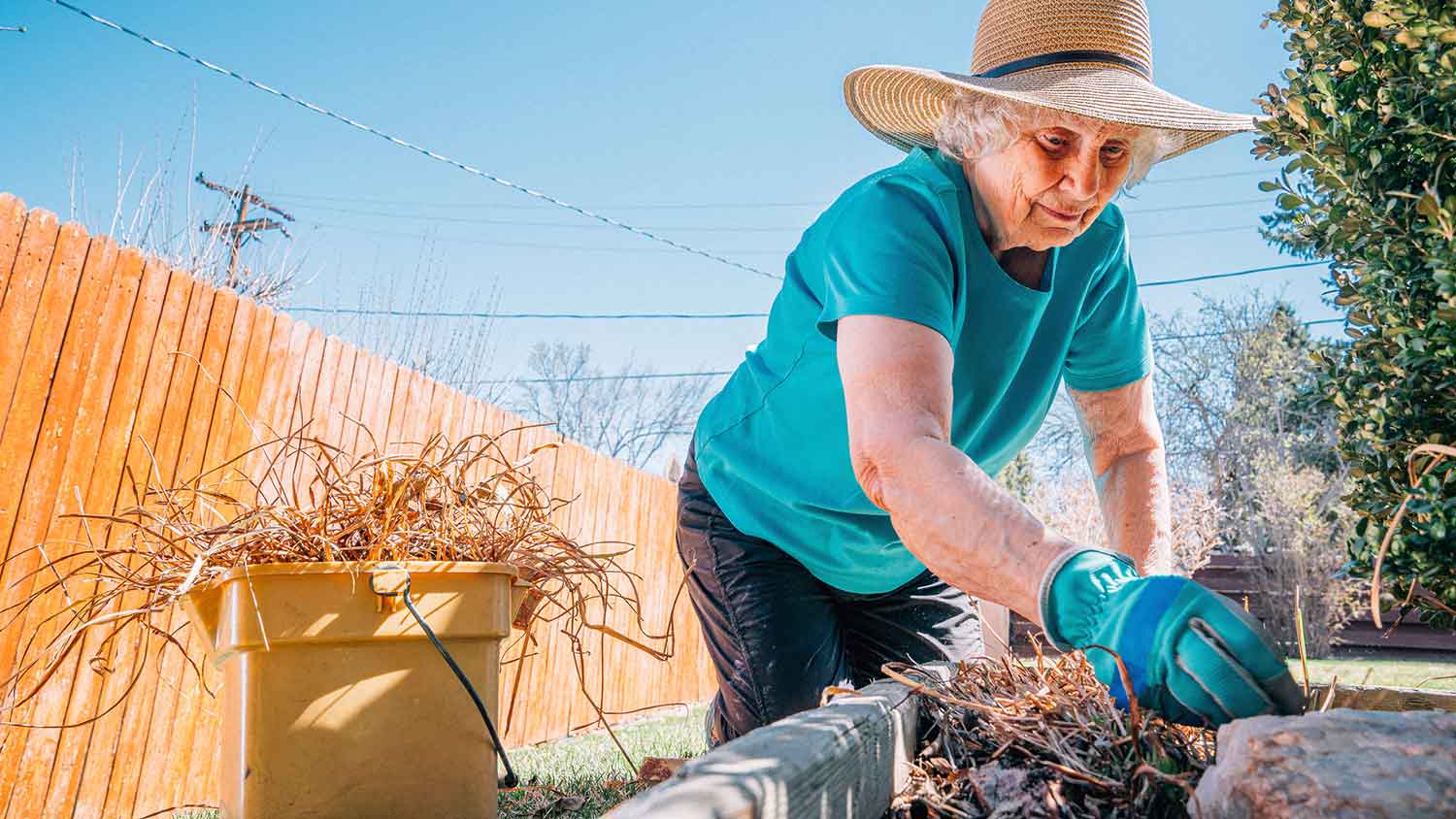
It turns out the best mulch for your trees is the kind that’s already lying on the ground. Plant material like twigs, leaves, buds, flowers, and bark found on your property can be reused to serve as mulch around a tree. As these materials break down, they release vital nutrients into the soil.
After foraging around your yard for materials, apply them in a 4- to 6-inch layer around the tree. Creating a thick mat like this will help retain moisture in the soil, and it also helps keep the mulch from blowing away in the wind. Leave a few inches of space between the trunk of the tree and the mulch, and extend the layer out to the tree’s drip line.
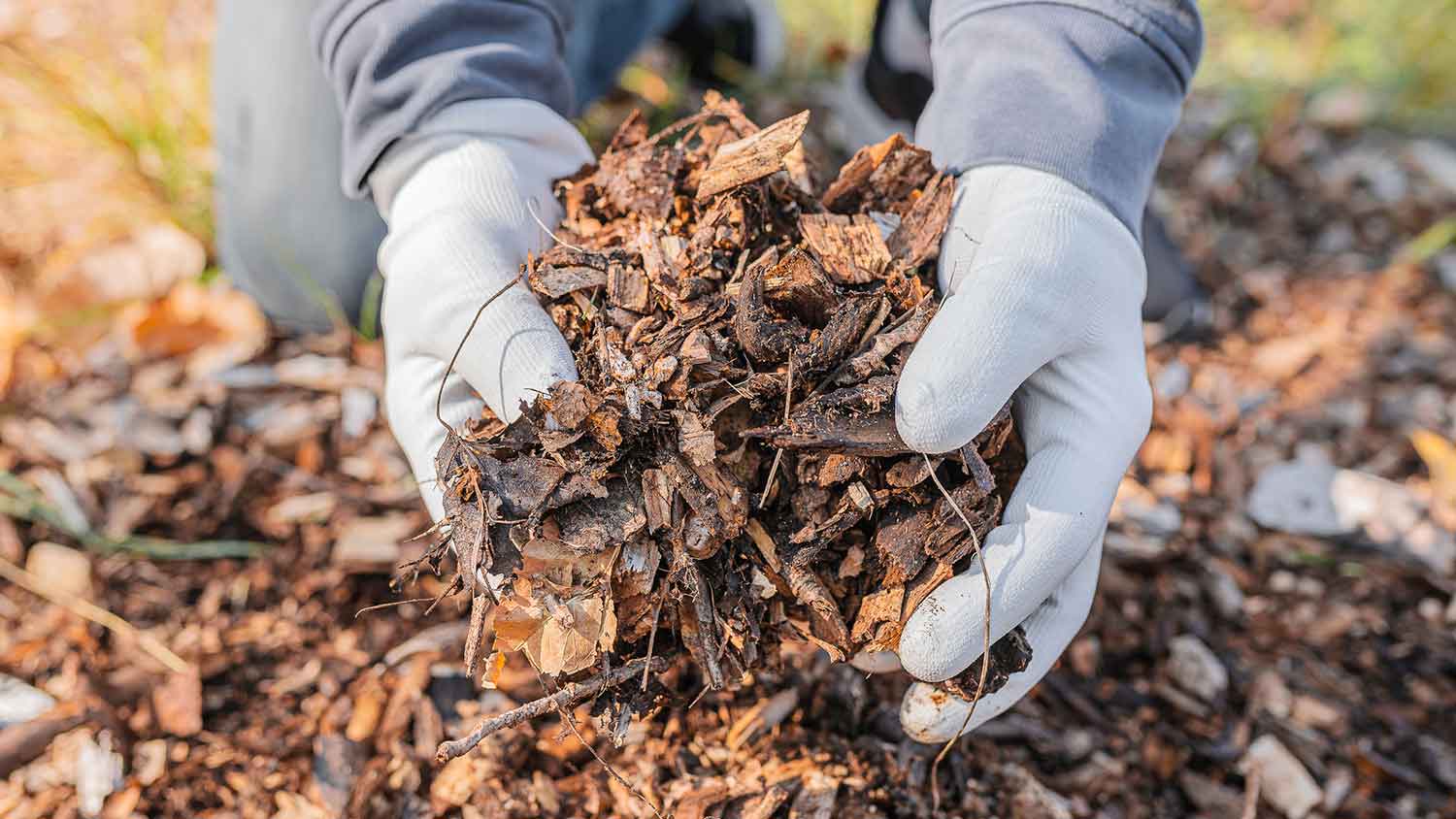
If you have a lot of trees on your property or don’t have time to go foraging for DIY mulch, wood chips are an excellent option. This type of mulch is made from parts of a tree, including leaves, bark, branches, and trunks, that have gone through a wood chipper. The chips lock together to form a barrier that helps control weeds while regulating moisture levels and protecting tree roots from extreme temperatures. They also provide excellent nutrition for your tree over a long period of time. A local mulch company or arborist can source wood chips for you.
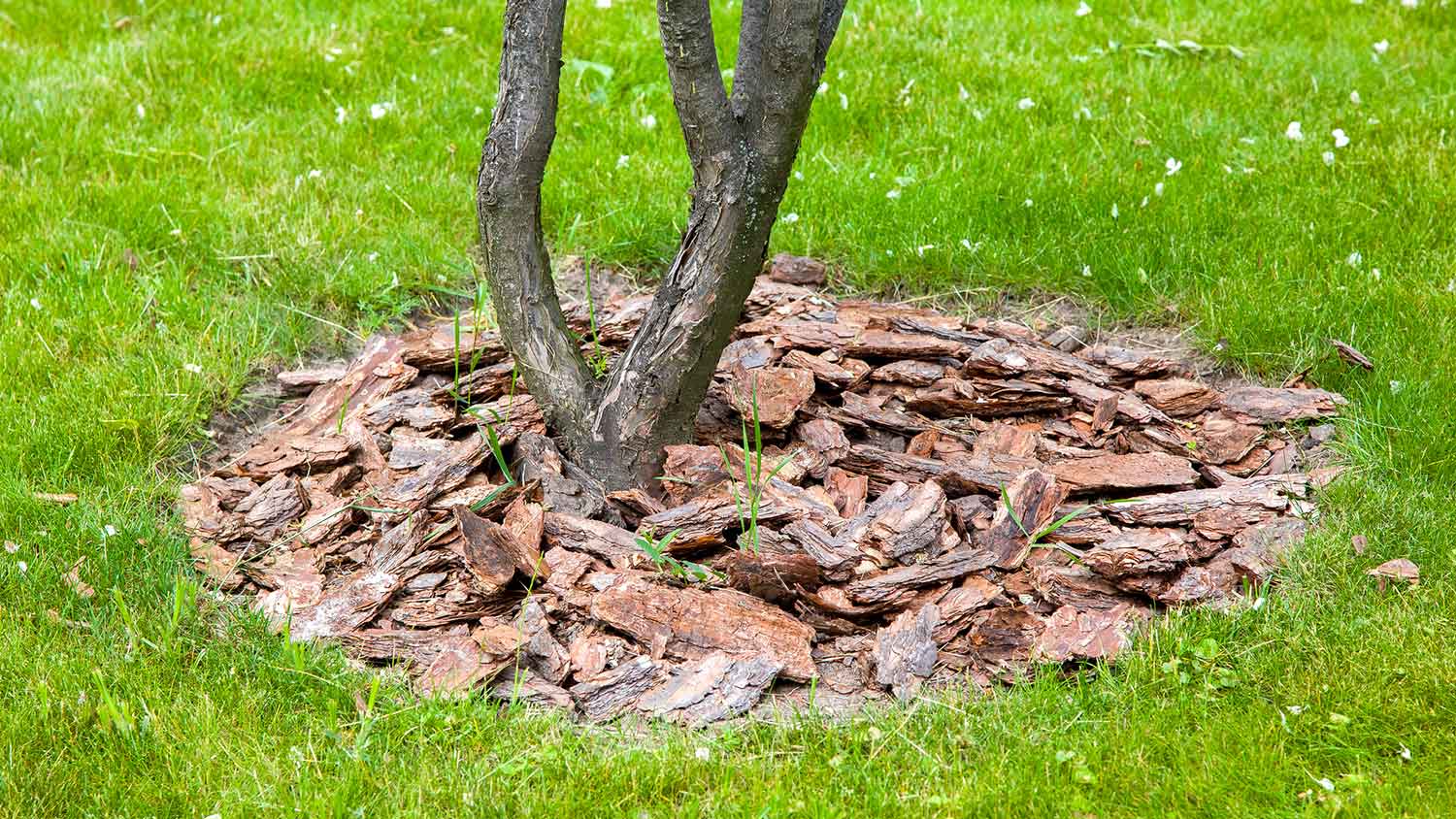
Also known as bark nuggets, this type of mulch comes in bags and is readily available at gardening centers or home improvement stores. Made of tree bark, the nuggets come in various sizes. They’re long-lasting and effective at retaining moisture and blocking weeds, but they also float in water, so they’re prone to washing away during heavy rainstorms.
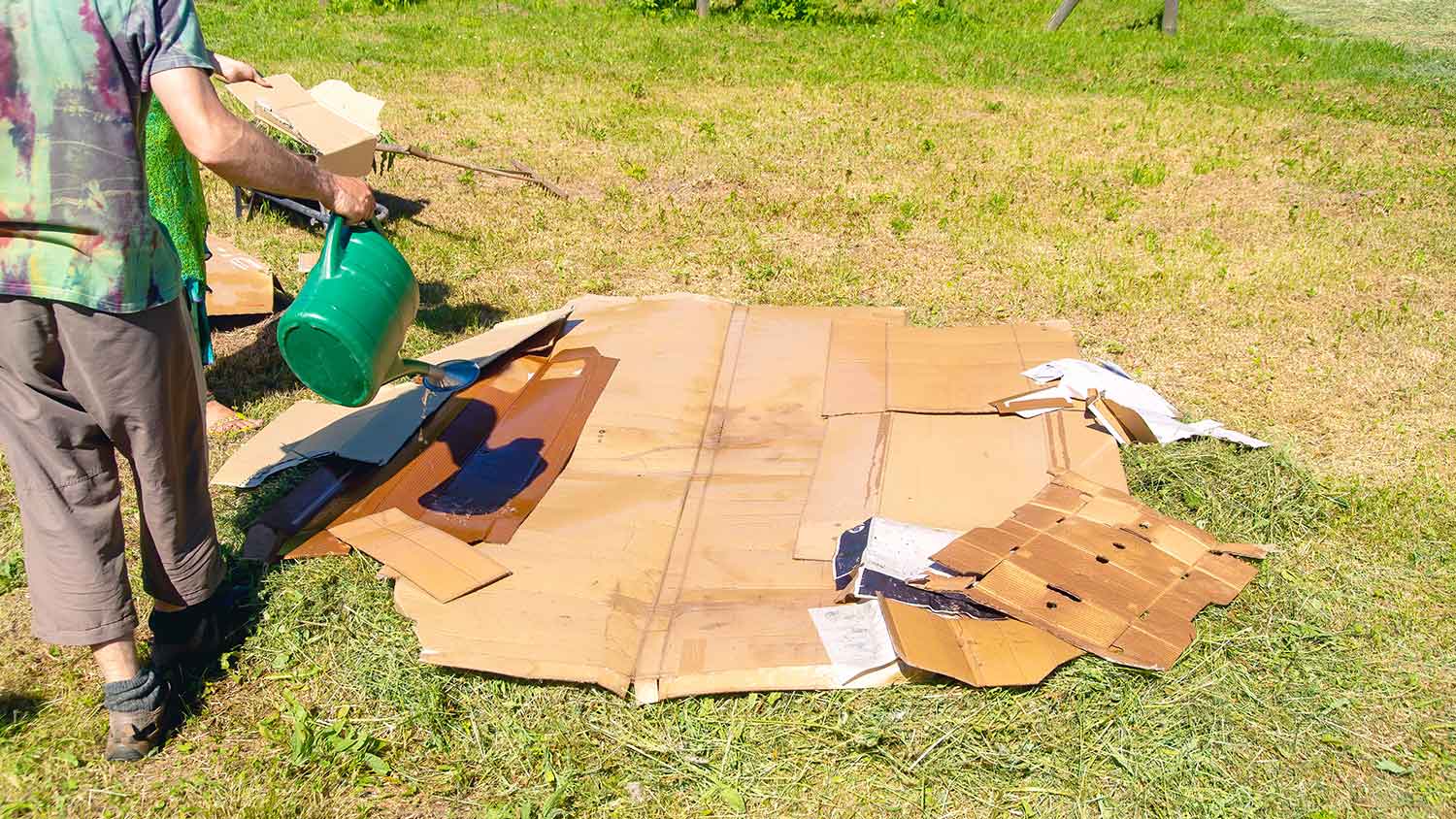
Believe it or not, unwaxed cardboard is another effective form of mulch that can enhance the vitality of your trees. (Cardboard is made of trees, after all.) When it’s free from staples or plastic, cardboard can be layered underneath wood chips to help inhibit weed growth and enrich the soil once it’s broken down. To make sure it breaks down well, soak the soil first, then soak each layer of cardboard.
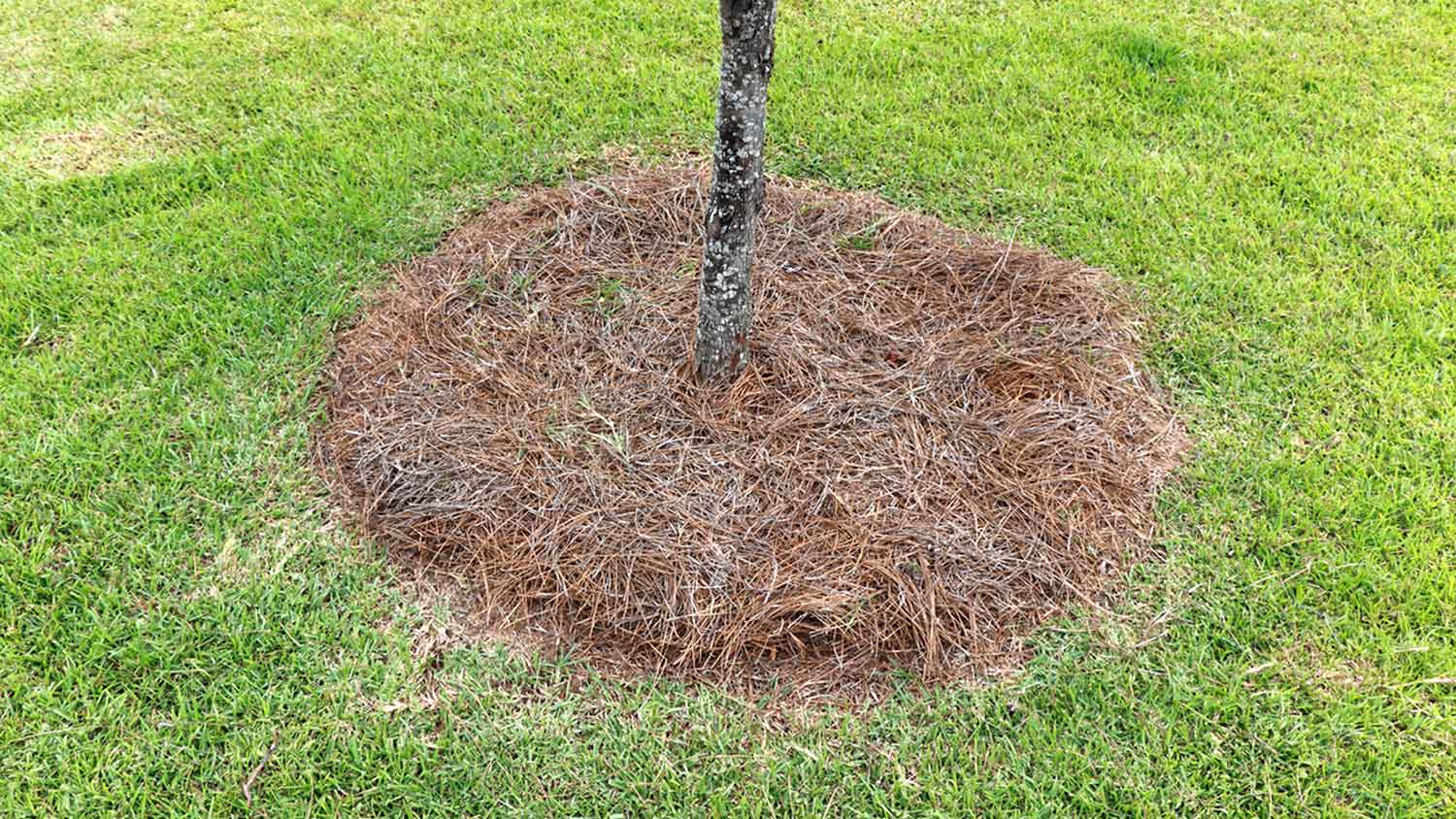
Also known as pine straw, this type of mulch is lightweight but also interlocks over time, making it a good choice for insulating the tree and its roots from extreme temperatures and harsh weather—both in winter and summer. Pine needles also help the soil retain water, although they’re not as effective at suppressing weed growth.
From average costs to expert advice, get all the answers you need to get your job done.

Discover the average forestry mulching cost, including per-acre and hourly rates, plus key factors that impact your total price. Get expert tips to save on your project.
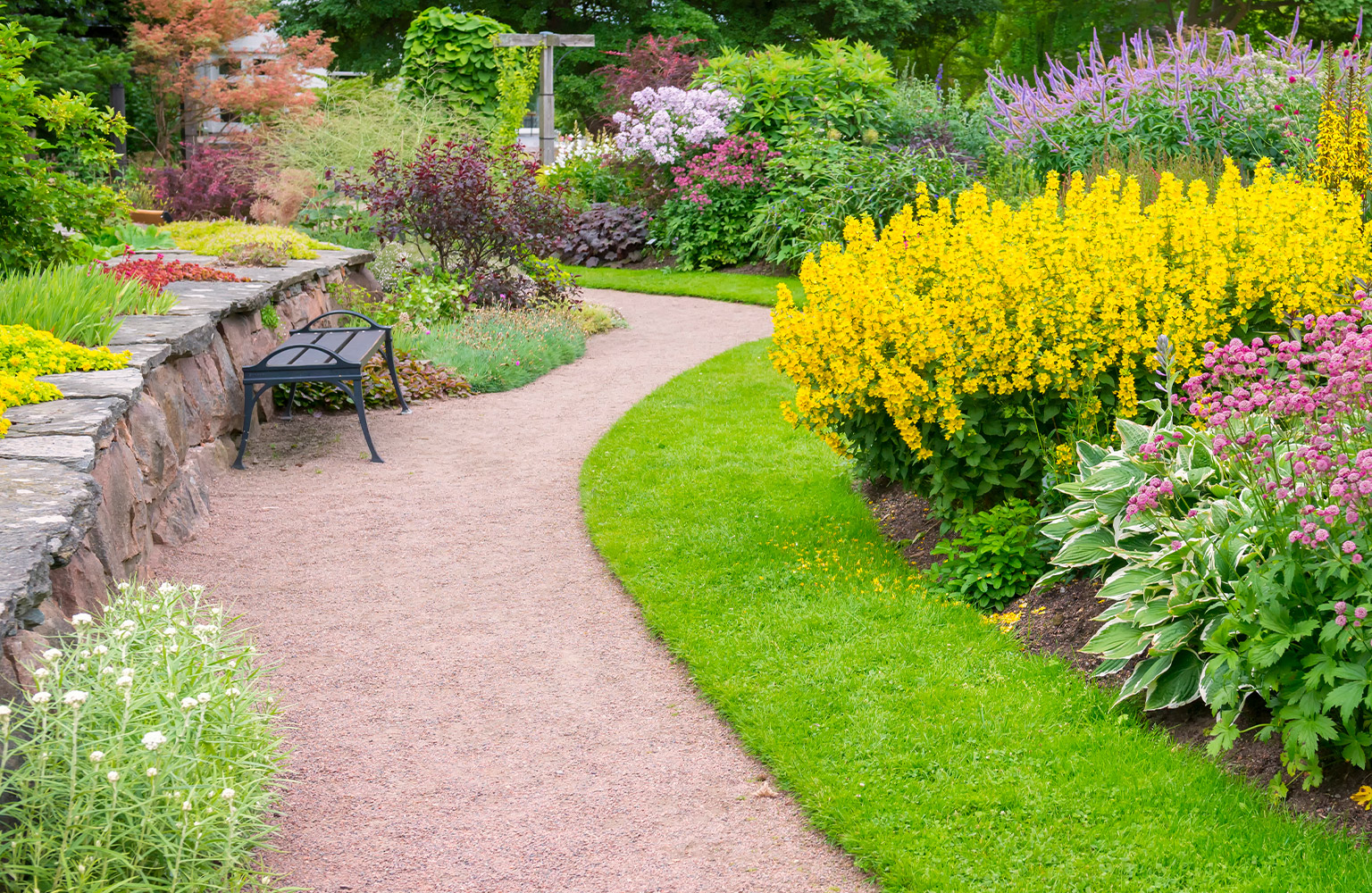
Discover the average sand delivery cost, key price factors, and tips to save on your next project. Get transparent, up-to-date estimates for sand delivery.

Find out the average mulch delivery and installation cost, plus key factors that impact your price. Learn how to budget, compare options, and save on your landscaping project.

Explore a guide to mulch versus rock landscaping. Uncover the pros, cons, costs, and more to shape a garden mirroring your style and landscaping needs.

Wondering if you should mulch in the fall to protect your plants from the colder weather? Chances are, you probably should. Here’s why.
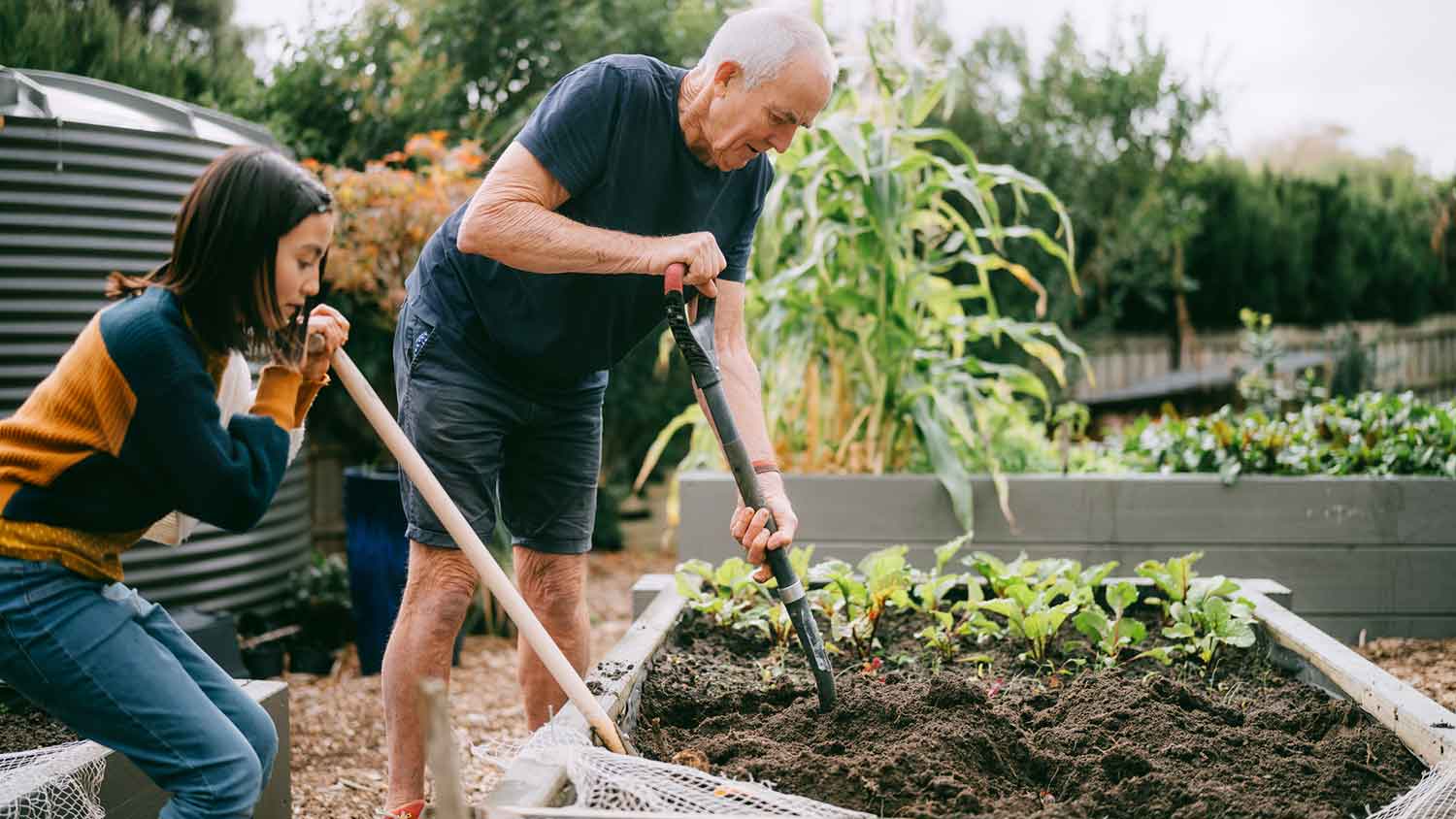
If you’re planning a garden and asking yourself, “How many yards of dirt do I need?” this dirt calculator will help you do the math to find the right number.